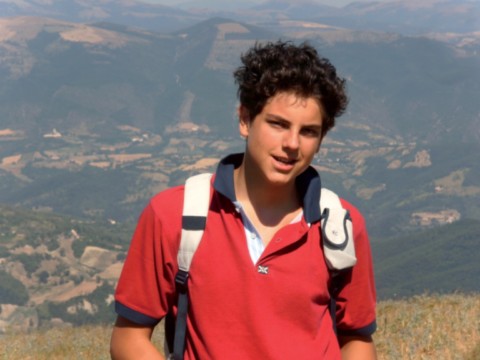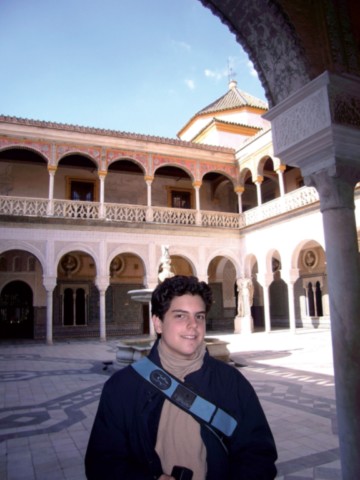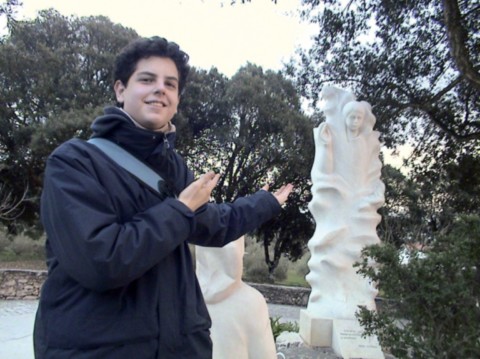Carlo Acutis: Young catechist in simplicity

Next September, in what will be the first canonization of his pontificate, Pope Leo XIV will canonize two young models of holiness for today’s youth: Carlo Acutis and Giorgio Frassati. Although they lived in different times —Frassati in early 20th-century Italy and Acutis in the digital world of the early 21st—, both shared a deep faith and a concrete love for the most needy.
The joint canonization of these two blesseds highlights that each saint embodies a perennial message while being profoundly rooted in his own time.
In particular, we wish to highlight the figure of Carlo Acutis, focusing on his ministry as a catechist and also as a pioneer of evangelization on the digital continent.
« My life plan is to always be united with Jesus ». These words of Blessed Carlo Acutis capture the depth of a heart beating with vibrant faith. Carlo did not, in his short life, develop a systematic theology or grand philosophical reflections; rather, in the brevity of his youth, he wanted to be a bridge between Christ and young people, especially for those who, like him, longed for answers in a digital world.
He designed websites and devoted himself entirely to collaborating with those who wished to communicate Christ through emerging digital technologies. One could say he was a catechist of the digital catechists.
Catechesis as spiritual friendship

God never tires of speaking to people of every time and place through ordinary persons who become extraordinary. All the saints always tell us the same thing: the goodness and mercy of a God who never ceases to be compassionate. God reveals himself through concrete and fragile people to speak the language of every generation; he is certainly doing so today with young people through the witness of Carlo Acutis.
Carlo was a catechist for three years. This beautiful and important aspect of his life is perhaps one of the least publicized so far.
Carlo understood that evangelizing young people required accessible language and authentic accompaniment. Without solemn sermons, he created four thematic exhibitions to make the faith visible to young people like him: Eucharistic miracles, Marian apparitions, angels and demons, and the afterlife. Each, designed with visual panels and documented accounts, transformed complex doctrines into narrative itineraries.
As a catechist, his advice to young people was deeply rooted in the Church’s tradition, in his own spiritual journey, and in the example of saints he took as models, especially St. Francis of Assisi and St. Anthony of Padua. Inspired by the poor man of Assisi and Franciscan spirituality, Carlo developed a love for nature and a deep respect for creation, values he later transmitted to other young people.
He was also inspired by Blessed Giacomo Alberione, founder of the Pauline Family, which led him to use emerging media such as the internet for evangelization.
His method reflected the call of Pope Francis in Christus Vivit:
« Young people need to be respected in their freedom, but they also need to be accompanied... The mentor does not put conditions on his gift » (CV 246).
Carlo embodied this model: he accompanied by praying the Rosary with friends, explaining the Eucharist in the schoolyard, and listening without judging. His catechesis was not monologue, but dialogue, inviting others to « ask good questions » about the meaning of life.
Carlo showed that the most credible catechesis comes from one who embraces his fragile humanity without hiding it.
As Christus Vivit states:
« Young people want a Church... that gives them space and entrusts them with tasks » (CV 206). Carlo was that space made flesh.
« For today’s youth, Carlo is an opportunity to ask good questions ». In a world where young people are searching for authentic role models, he shines like a burning candle: a young saint who accompanied youth, from fragility, towards Joy. His famous phrase, « we are born originals, but we die as photocopies », showed, in his short passage on earth, that he tirelessly sought God’s Truth in his life. Carlo lived as an original, ran the race of life (as St. Paul says) as an original, and returned to the Father’s house as an original.
As we prepare for his canonization and for the upcoming missionary month of October, may his intercession inspire a new generation of young catechists and missionaries who, like him, dare to be « original algorithms of the Gospel ».
Today, his life challenges every catechist, especially older ones:
• Do we believe that a teenager can be a spiritual guide for other teenagers?
• Do we understand catechesis as a field hospital where wounds are healed by closeness?
• Are we, like Carlo, bridges and not obstacles towards Christ?
Bibliography: Carlo Acutis, Heaven at Heart (2025), Jean-Luc Moens.

Keys for today’s youth catechists:
a) Always keep joy as a method
Carlo repeated: « Sadness looks down; joy looks up ». His catechesis radiated joy because it flowed from his friendship with Jesus.
b) Listen before speaking
His exhibitions arose from asking: « What troubles you? ». As Pope Francis recalls in Christus Vivit: « Jesus had no use for adults who looked down on the young or lorded it over them » (CV 14).
c) Sanctify the ordinary
Carlo played soccer, programmed, and joked. In everyday life, he showed that « God makes himself present in the lives of people like us ».

